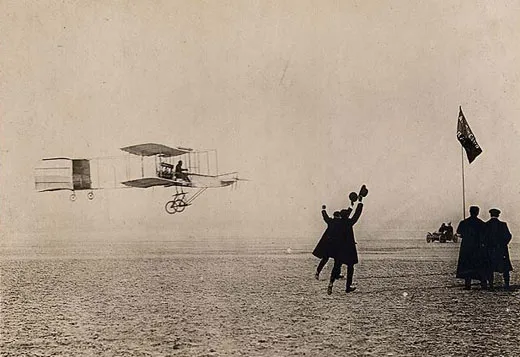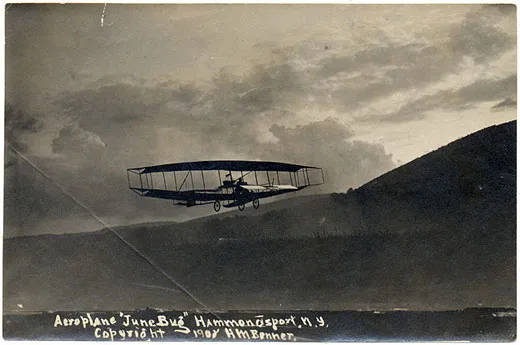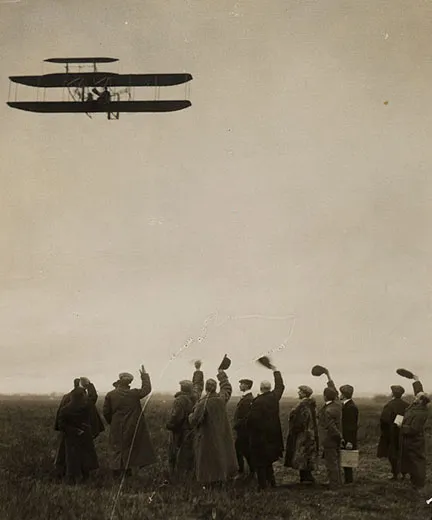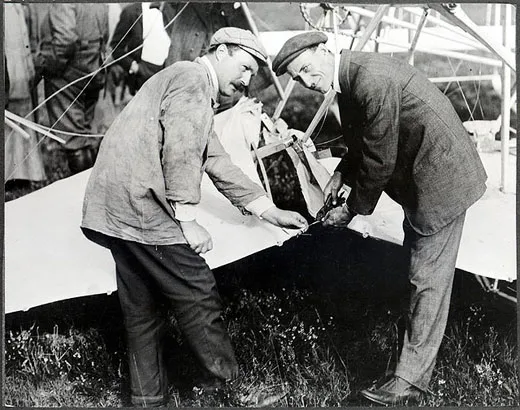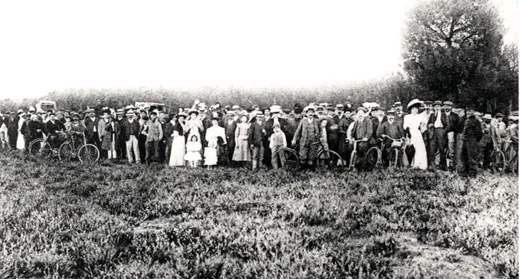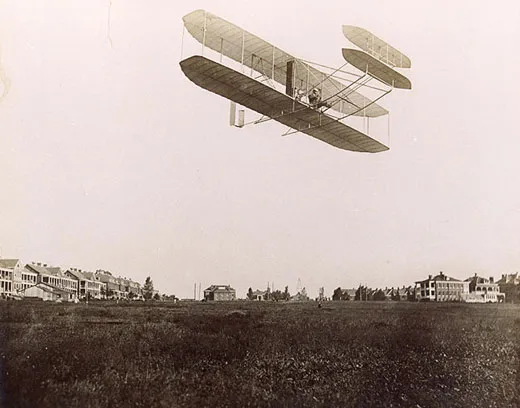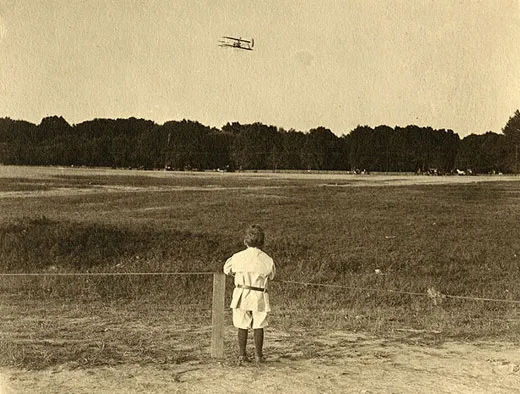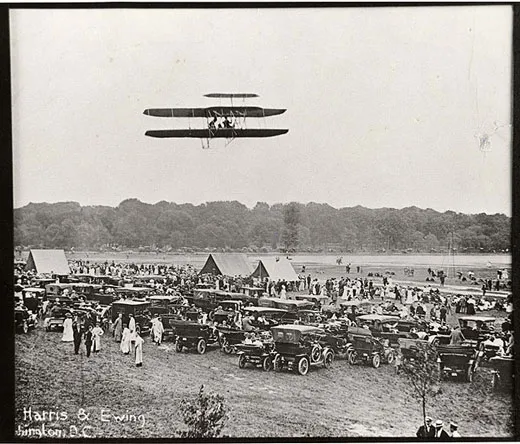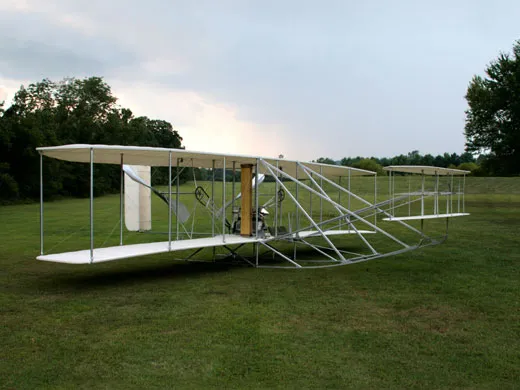1908: The Year the Airplane Went Public
Five years after Kitty Hawk, the Wrights finally showed the world their invention.
/https://tf-cmsv2-smithsonianmag-media.s3.amazonaws.com/filer/1908-claudy.jpg)
The honor is indisputably theirs: Wilbur and Orville Wright made the first powered, sustained, controlled, heavier-than-air flights at Kill Devil Hills, North Carolina on December 17, 1903.
But even though they had succeeded, the Wrights recognized that they had a considerable distance to go before they could claim to have developed a practical flying machine. So they continued their work in a Dayton cow pasture in 1904 and 1905. By the fall of 1905, they had transformed the marginal success of 1903 into the reality of a practical airplane capable of traveling many miles through the air and remaining aloft for more than an hour at a time. The Wrights worried about being copied, though. Unwilling to unveil their creation without the protection of a patent and a signed sales contract, the brothers remained on the ground for the next two and a half years as they attempted to market their invention.
So it was that as 1908 dawned, almost no one realized that the age of winged flight had been under way for more than four years. That was about to change. With contracts for the sale of airplanes to a French syndicate and the U.S. Army finally in hand, the Wrights were ready to take to the air once again that spring. They returned to the Kill Devil Hills with a rebuilt version of their 1905 airplane—now modified with upright seating and controls, and a second seat for a passenger. On May 14, 1908, Wilbur and Orville alternated taking Charles Furnas, one of their mechanics, up as the world’s first airplane passenger.
While the Wrights prepared for their first public flights, other experimenters took to the air, often with crowds watching in amazement. On January 13, 1908, Henry Farman flew his Voisin Farman I in a one-kilometer circle to win the 50,000-franc Deutsche-Archdeacon prize. It was a big spring for the Aerial Experiment Association, as well. Founded by Alexander Graham Bell, the AEA included a pair of young Canadian enthusiasts, Frederick W. “Casey” Baldwin and J.A.D. McCurdy, along with two Americans, Lt. Thomas Selfridge of the U.S. Army and Glenn Hammond Curtiss. The AEA built and flew a series of three aircraft that spring and summer, culminating in Curtiss’s flight aboard the biplane June Bug at Hammondsport on July 4, 1908. Covering almost a mile in one minute 42.5 seconds, the achievement earned the group the Scientific American Trophy. Later that summer, Curtiss traveled to Fort Myer, Virginia, where he flew with Captain T.S. Baldwin aboard the hydrogen-filled dirigible airship SC-1, which was purchased by the Army.
The excitement peaked on August 8, 1908, when Wilbur Wright made his first flight in public at the Hunaudieres race course, five miles south of Le Mans, France. Over the next several weeks he made headlines around the world with one stunning flight after another—demonstrating once and for all that the Wrights’ claim to priority in the invention of the airplane was true (there had been skeptics), and that their airplanes were capable of tight turns and a degree of control impossible with other machines.
Orville Wright joined his brother in the limelight on September 3, 1908, when he made his first public flight at Fort Myer. Like Wilbur, he continued to fly over the next two weeks, carrying passengers and meeting criteria established by the Army for the purchase of an airplane. Tragedy struck on September 17, when Orville crashed at Fort Myer while flying with Selfridge, who became the first person to die in a powered airplane crash. Orville recovered, but lived with the pain resulting from the accident for the rest of his life.
The momentous year was far from over. On October 16, the American Samuel Franklin Cowdery (aka S.F. Cody) made the first flight in Great Britain. Once Orville Wright was back on his feet, he and his sister Katharine joined their brother in Europe. The three Wrights were now the toast of the continent. Crowned heads, political leaders, captains of industry and ordinary folk traveled to witness the miracle of flight. Wilbur capped this extraordinary year with a flight of more than 76 miles in 2 hours 18 minutes 33 3/5ths seconds on December 31, which earned him the Michelin Cup and a 20,000 franc cash prize for the best flight of 1908.
By year’s end, no skeptic doubted that the age of flight had arrived, and that the Wrights were leading the way.
Tom D. Crouch is a Wright biographer and senior curator in the aeronautics division of the National Air and Space Museum. His books include The Bishop’s Boys: A Life of Wilbur and Orville Wright.
